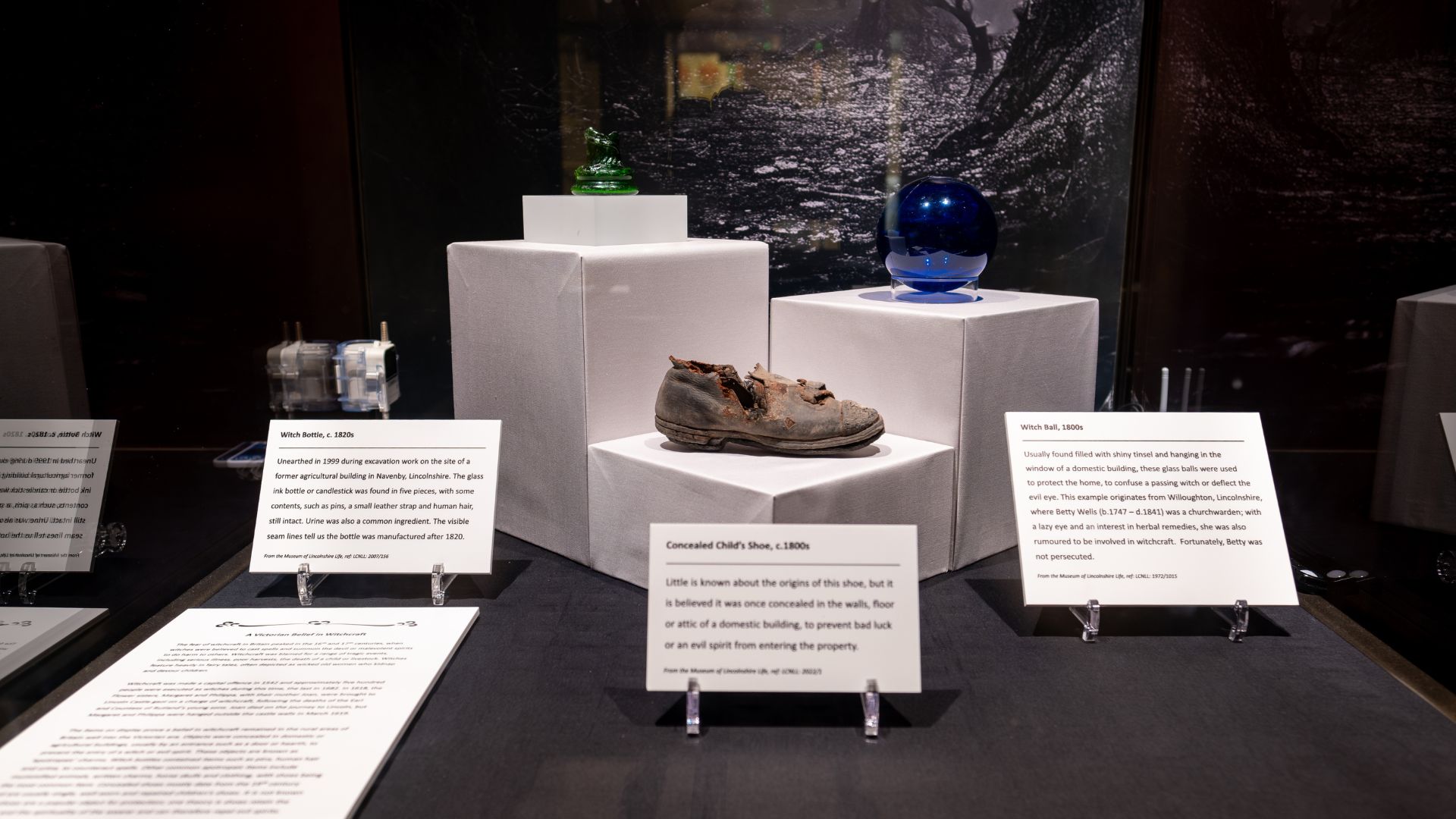
Artefacts highlighting the history of local witchcraft have gone in display at Lincoln Castle.
The fear of witchcraft in Britain peaked in the 16th and 17th centuries, when witches were believed to cast spells and summon evil spirits to do harm to others. Witchcraft was blamed for a variety of tragic events ranging from poor harvest and illness, to the death of children and animals.
The items in the new display prove that a belief in witchcraft remained in rural areas well into the Victorian era. Objects used as charms were often hidden near the entrance to a home as a means to protect the home and family from witchcraft by warding off evil spirits and deflecting spells.
One such unusual charm on display is a witch bottle, found in Navenby in 1999. Thought to date back to the 1820s, the bottle was found broken into pieces and has been painstakingly reassembled by the collections team at the county council.
A small leather strap, human hair, and a variety of pins were found inside the witch bottle. It is also thought that it would have originally contained urine.
Another such protective charm on display is a witch ball from the 1800s. Witch balls were often filled with shiny tinsel, and were meant to confuse passing witches and deflect the ‘evil eye’.
The example on display was found in the Lincolnshire village of Willoughton, where the churchwarden, Betty Wells (b.1747 – d.1841) was rumoured to be involved in witchcraft due to her lazy eye and interest in herbal remedies. Thankfully, despite the rumours, Betty was not persecuted.
Lincoln Castle has its own connection to witches.
After it became a capital offence in 1542, around 500 people were executed for witchcraft around the country, the last in 1682.
In 1618, Joan Flower and her daughters, Margaret and Philippa were brought to the gaol at Lincoln Castle, charged with witchcraft after the son of the family they had been working for at Belvoir Castle fell ill and died.
On the journey, Joan, determined to prove her innocence, agreed to take part in a ‘ordeal by bread’. A chaplain amongst the travelling party blessed some bread, as it was thought that no witch could eat something as sacred.
Joan placed a piece of the bread in her mouth, fell to the ground, and quickly died.
Her daughters Margaret and Philippa were later subjected to rigorous interrogation and admitted to using magic to make the son sick. At their trial the daughters were not allowed a defence lawyer, and they were found guilty under the witchcraft act and sentenced to death.
Margaret and Philippa were hanged outside the castle walls in March 1619.
See the Lincolnshire witchcraft display inside the castle’s Magna Carta vault until Sunday 5 January 2025.
All the artefacts in the display are from Lincolnshire County Council’s collection.
Plan your visit to Lincoln Castle at www.lincolncastle.com.
